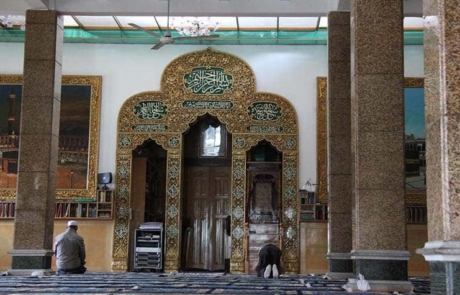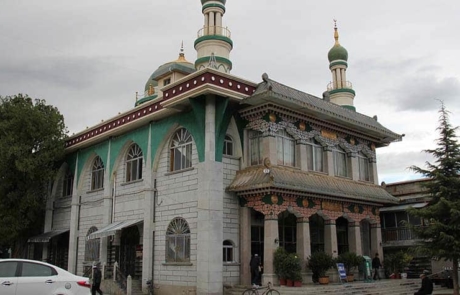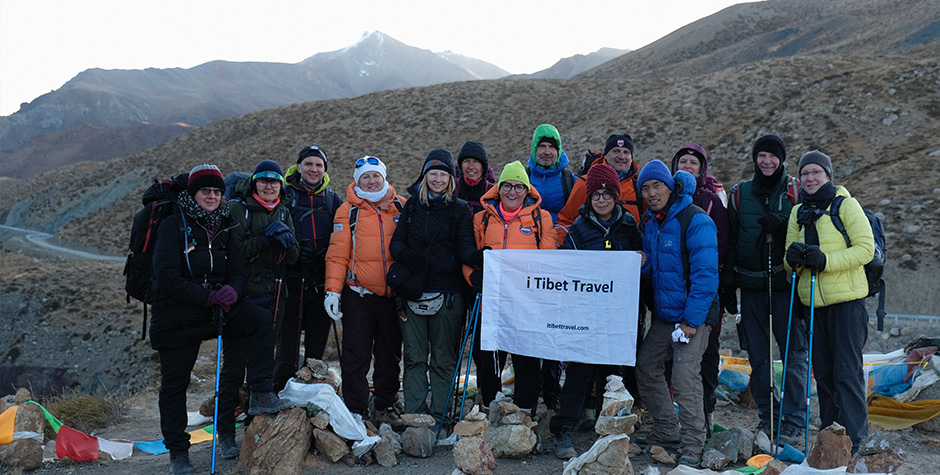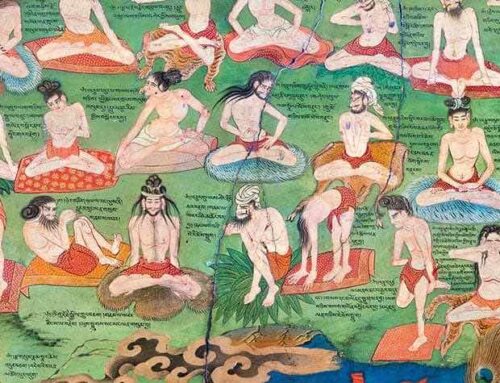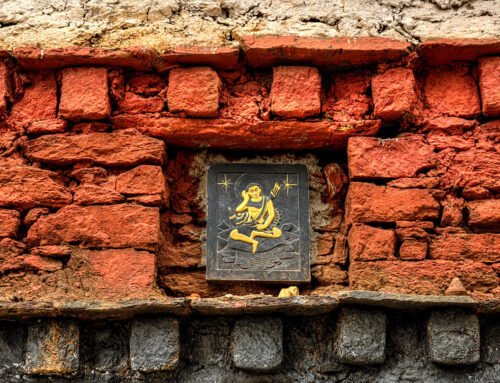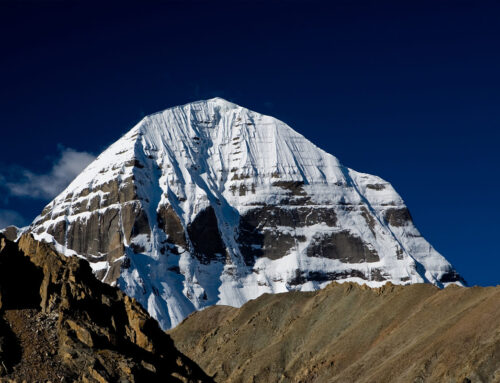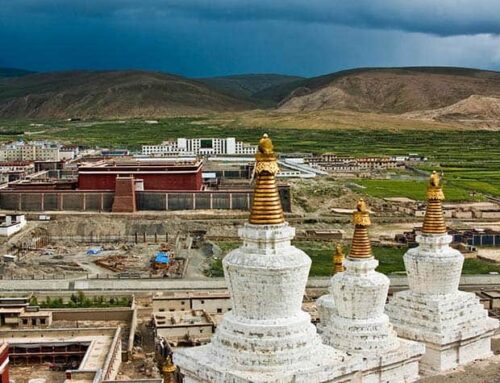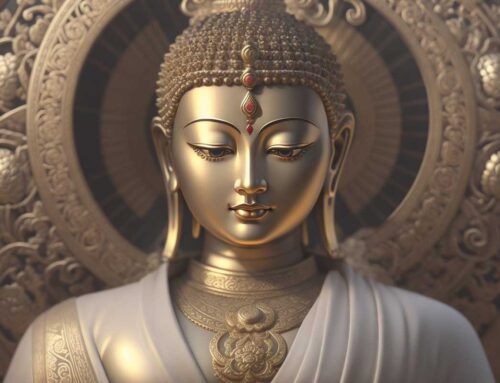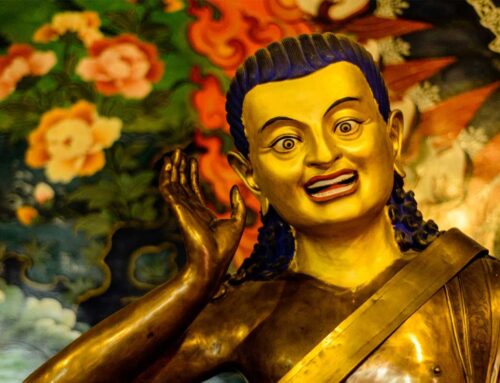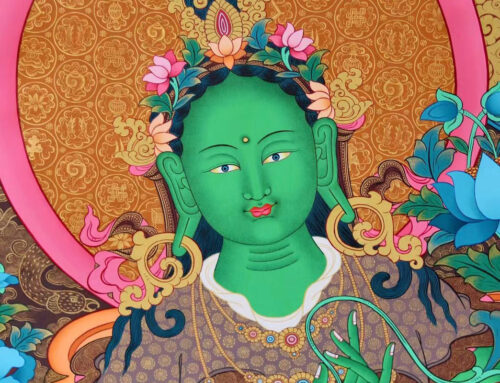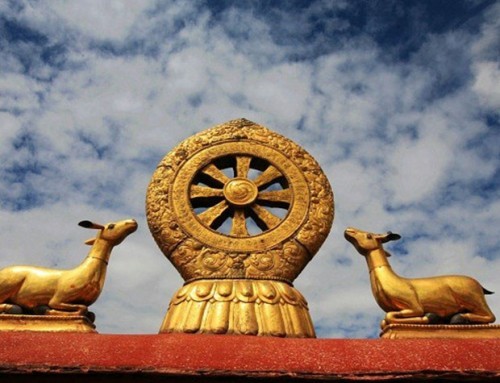Tibetan Muslim are commonly found in Lhasa and other major cities in Tibet. Muslim in the Tibetan community has a long history and enjoy a close and stable relationship with the Buddhist community in Tibet. Tibetan Muslims community are the very important community in Tibet in terms of trades and craftsmanship. Muslims in Tibet as called Kache. The name Kache derived from the place of origin of Tibetan Muslim. Kashmir in Tibetan is called Kache Yul.
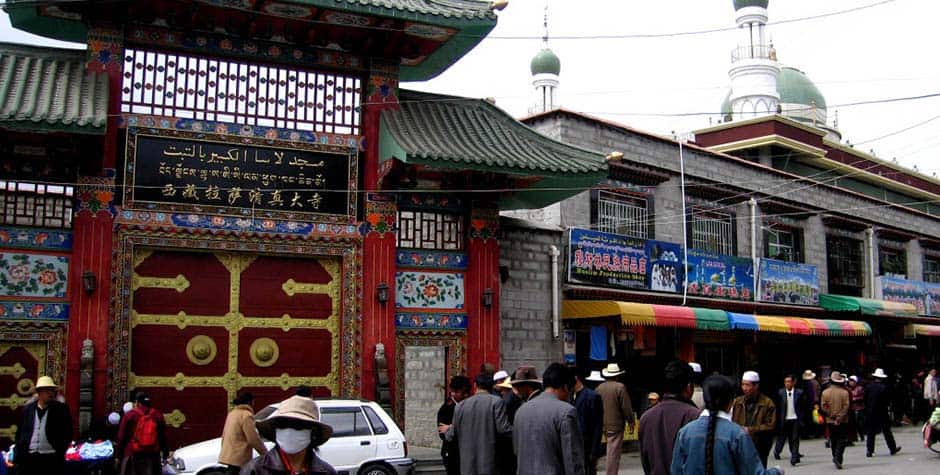
History of Tibetan Muslim
There has been a very long history of the relationship between the Tibetan and the Muslim world. One significant influence of the Muslim world to Tibetan culture in the historic time is the turban. When you travel to Tibet, you will find in all the wall mural about Tibetan kings and queens, there will be a people wearing turbans. This turban culture is influenced by the Muslim world. You will also find our Tibetan Kings wearing the turban in Tibetan adaptation like the one which is on our greatest king Songtsen Gampo.
Tibet is also a very popular route for the ancient silk route with the kingdom of Guge as the main hub of trade and commerce. In this long history of our relationship with the middle east, merchants from these areas have settled in western and central Tibet. In the 14th century, Islam is introduced by the Sufi master in Ladakh and Kashmir. After this, the many settlers are Muslim migrants. The main influx of Muslim from Kashmir and Ladakh occurred during the reign of the fifth Dalai Lama. They came mostly due to the widespread famine in Kashmir and settled in Lhasa. Which is why the common term for the Muslim is Lhasa Kache.
Special Privileges Granted By the fifth Dalai Lama
Tibetan Buddhist are very tolerant to the Muslims which contribute to the thriving of the Muslim community in Tibet. Fifth Dalai Lama introduces the policy of tolerance for all religious factions. In which special privilege is granted for the Muslim community.
- They can elect a five-member committee to supervise their internal affairs,
- They can settle their own disputes independently according to the Sharia laws
- They could open shops and conduct trade in other Tibetan cities, and were exempt from tax.
- They could eat meat during the Buddhist holy month of Sakadawa and do not need to take off their hats to the monk officials during the Monlam prayer festival.
Moreover, the Fifth Dalai Lama gave the Muslim community land in Lhasa for a mosque and a cemetery and invited its leaders to all major government celebrations.
Muslim Institution in Tibet
The arrival of Islam in Tibet was followed by the construction of mosques in different parts of Tibet. There are four mosques in Lhasa, two in Shigatse and one in Tsedang. Tibetan Muslim are mostly concentrated around the mosques and it is centers of Muslim social life in Tibet.
Muslim in Tibet has its own burial place. There are two cemeteries in Lhasa; One is at the Gyanda Linka and the other is at Kygasha. The portion on Gyanda Linka was turned into Garden and became the place for the Muslim community to organize their major functions. Kygasha is mainly used by the Muslim of Chinese origin.
Muslims confined themselves to trade and commerce. As the community grew Madrasas (primary schools are set up to teach Islam to the younger generation. There were two Madrasas in Lhasa and one in Shigatse.
Contribution to Tibetan Culture
Kache Phalu: Kache Phalu (a few words of Advice from a Muslim) is written by highly learning Tibetan Muslim scholar Faidhullah. This book is one of the best books written in the Tibetan Language and even today we continue to quote from this book. The book has been translated into English. The book is based on the three Persian classics.
Nangma: Nangma is Tibetan song Genre particularly popular in Lhasa. It is popular classical music, brought to Tibet by Tibetan Muslims. The word Nangma derives from the Urdu word Naghma meaning song. The high-pitched tilting song, developed in Tibet in centuries.
Nangma, popular classical music of Tibet, is said to have been brought to Tibet by Tibetan Muslims. In fact, the very term Nangma is believed to be derived from the Urdu word Naghma meaning song. These high-pitched tilting songs, developed in Tibet around the turn of the Century, were a craze in Lhasa with musical hits by Acha Izzat, Bhai Akbar-la and Oulam Mehdi on the lips of almost everyone.
About Tibet Travel & Tours
Tibet Travel & Tours is a local travel agency in Tibet that offers unique and authentic experiences to travelers from all around the world. As a leading tour operator in Tibet, we provide high-quality Tibet Travel services that are tailored to our clients' needs and preferences.
Our team of experienced and knowledgeable professionals strives to ensure that our clients have a hassle-free and memorable trip in Tibet. We specialize in various types of tours, including cultural tours, trekking and hiking tours, and adventure tours.
Our commitment to providing exceptional service has earned us a reputation as one of the best local travel agencies in Tibet. Contact us today to plan your unforgettable trip to Tibet.
Explore Tibet with a local Tibetan Travel Agency
If you're looking to explore Tibet, starting your journey with a reputable Tibetan travel agency in Tibet is crucial. Tibet Travel & Tours is a great choice to begin your adventure with their extensive knowledge of the region and commitment to responsible tourism.
Their Tibet tour packages cater to a range of interests and budgets, making it easy to plan a trip that suits your needs. Before embarking on your tibet tour, it's essential to have the right Tibet travel information and necessary documents, including a Tibet travel permit.
The Tibet Travel Planner provided by i-Tibet travel is an excellent resource to plan your trip, including tips on what to pack, where to stay, and what to see.
For beginners, the "About Tibet" guide provided by i-Tibet travel offers a comprehensive overview of the region's history, culture, and top attractions. So, start your Tibet travel plan here with i-Tibet travel and discover the magic of Tibet for yourself.

